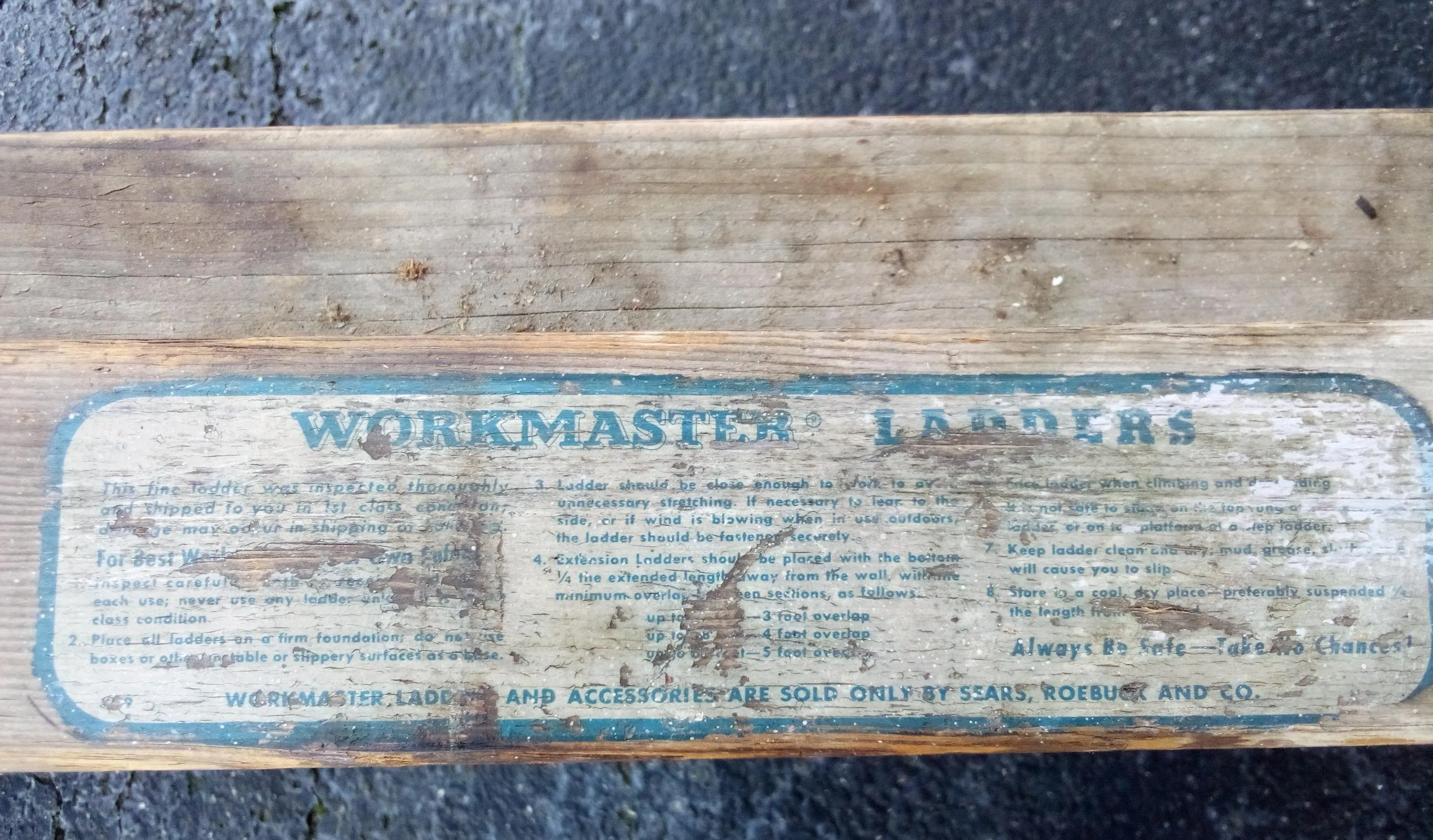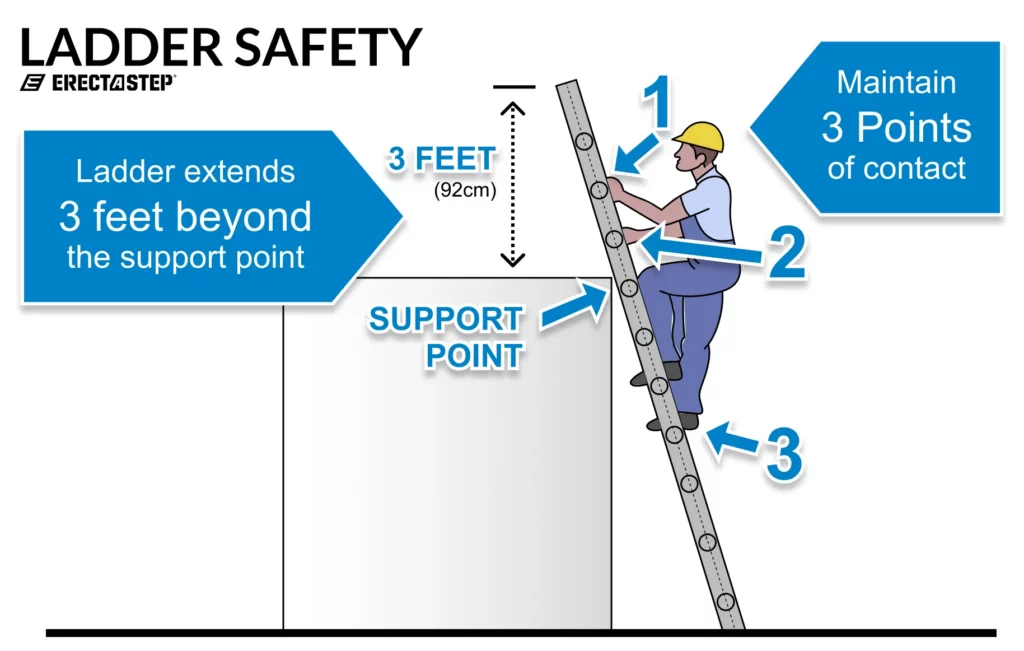Reading ladders are essential tools for educators. They help guide students through progressively challenging texts.
But what exactly makes a reading ladder effective? A well-constructed reading ladder can be a game-changer in a classroom. It supports students’ reading growth by offering a clear path from simpler to more complex texts. Reading ladders aim to build confidence and comprehension skills.
They are carefully designed to cater to different reading levels and interests. Educators use them to ensure that students are continuously challenged, yet not overwhelmed. This balance is crucial for fostering a love for reading. So, how can one create the best-laid reading ladder? Understanding the elements that make a reading ladder effective is the first step. Let’s explore the key components and strategies to build an impactful reading ladder for your class.

Credit: www.homedepot.com
Introduction To Reading Ladders
Reading ladders are a powerful tool in education. They help guide students through increasingly complex texts. This process builds reading skills and confidence.
Reading ladders work by starting with simple books. Then, they gradually introduce more challenging ones. This strategy ensures a smooth transition from one level to the next.
Concept Of Reading Ladders
The concept of reading ladders is straightforward. Each “rung” represents a different book or text. The books are arranged from easiest to hardest. The goal is to climb each rung successfully.
This method helps students progress at their own pace. Teachers can tailor ladders to fit individual needs. This personalization boosts engagement and learning.
| Level | Type of Book | Example |
|---|---|---|
| 1 | Picture Books | Goodnight Moon by Margaret Wise Brown |
| 2 | Early Readers | Frog and Toad Are Friends by Arnold Lobel |
| 3 | Chapter Books | Charlotte’s Web by E.B. White |
| 4 | Young Adult Novels | The Hunger Games by Suzanne Collins |
Importance In Education
Reading ladders play a crucial role in education. They encourage a love for reading. Students feel accomplished as they complete each rung.
This method also improves comprehension. Students understand and retain more information. They develop critical thinking skills. The gradual increase in difficulty helps them adapt.
Reading ladders can also bridge the gap between different reading levels. They support struggling readers. Advanced readers stay challenged. Everyone benefits from this method.
In summary, reading ladders are beneficial for all students. They foster a positive reading experience. They build lifelong learners.

Credit: www.chairish.com
Types Of Reading Ladders
Reading ladders are a great way to help readers find books that match their abilities and interests. They can be categorized into different types, each serving a specific purpose. Let’s explore some of the most common types of reading ladders.
Genre-based Ladders
Genre-Based Ladders help readers explore different genres. They start with simple books and move to more complex ones. This type of ladder is perfect for readers who enjoy a specific genre and want to read more challenging books within that genre. Here is an example:
| Level | Book Title | Author |
|---|---|---|
| 1 | Harry Potter and the Sorcerer’s Stone | J.K. Rowling |
| 2 | The Hobbit | J.R.R. Tolkien |
| 3 | The Name of the Wind | Patrick Rothfuss |
Skill-based Ladders
Skill-Based Ladders focus on developing specific reading skills. These ladders start with books that build foundational skills and progress to books that require advanced skills. This type of ladder is ideal for readers who need to improve their reading abilities. Here is an example:
- Basic Skills: Green Eggs and Ham by Dr. Seuss
- Intermediate Skills: Charlotte’s Web by E.B. White
- Advanced Skills: To Kill a Mockingbird by Harper Lee
Whether you are trying to cultivate a love for a specific genre or enhance reading skills, reading ladders provide a structured and engaging path for readers.
Creating Effective Reading Ladders
Effective reading ladders guide students in their reading journey. They help students progress from simple to more complex texts. This section will explore creating such ladders. We will look into identifying student needs and selecting appropriate materials.
Identifying Student Needs
Understanding student needs is crucial for creating reading ladders. Begin by assessing their current reading levels. Use tools like standardized tests or informal assessments. These methods provide a clear picture of their abilities.
Here are some ways to identify student needs:
- Reading assessments: Gauge their comprehension and fluency.
- Student interviews: Learn about their interests and challenges.
- Classroom observations: Notice their reading habits and preferences.
Selecting Appropriate Materials
After identifying needs, select suitable reading materials. Choose texts that match their reading level. Ensure the materials are engaging and relevant.
Consider the following factors when selecting materials:
| Factor | Description |
|---|---|
| Reading Level | Match the text complexity to student ability. |
| Interest | Choose topics that capture student attention. |
| Diversity | Include texts from various cultures and perspectives. |
Using a variety of materials keeps students engaged. It also broadens their understanding and appreciation of different genres and viewpoints.
Effective reading ladders consider these factors. They support students’ growth and foster a love for reading.
Implementing Reading Ladders In The Classroom
Reading ladders help students improve their reading skills step by step. They start with easy books and gradually move to harder ones. This method encourages a love for reading and helps students gain confidence.
Step-by-step Guide
Step 1: Assess each student’s reading level. Use a simple test or observe their current reading habits.
Step 2: Choose a variety of books. Include different genres and difficulty levels.
Step 3: Create a reading ladder for each student. Start with easy books and slowly increase the difficulty.
Step 4: Monitor progress. Check in with students regularly to see how they are doing.
Step 5: Adjust the ladder as needed. If a book is too hard, move to an easier one.
Common Challenges And Solutions
Challenge 1: Students may feel overwhelmed by harder books.
Solution: Encourage them to take their time. Remind them it’s okay to reread sections or ask for help.
Challenge 2: Some students may lose interest.
Solution: Include books on topics they enjoy. Offer rewards for completing each rung of the ladder.
Challenge 3: Limited book resources.
Solution: Use digital libraries or borrow books from other classrooms.
Challenge 4: Managing different reading levels in one classroom.
Solution: Group students by similar reading levels. Provide activities that cater to each group’s needs.
| Step | Description |
|---|---|
| 1 | Assess student’s reading level |
| 2 | Choose a variety of books |
| 3 | Create reading ladders |
| 4 | Monitor progress |
| 5 | Adjust ladder as needed |
Measuring Success Of Reading Ladders
Measuring the success of reading ladders is vital for effective teaching. By tracking progress, educators can adjust strategies to meet student needs. This section will explore how to measure success and adjust strategies for improvement.
Assessment Techniques
Effective assessment techniques help in tracking student progress. Here are some methods:
- Reading logs: Students record their daily reading.
- Quizzes and tests: Measure comprehension and retention.
- Reading conferences: One-on-one discussions about books.
- Peer reviews: Students review each other’s work.
- Self-assessments: Students reflect on their reading journey.
Using these techniques provides a comprehensive view of student progress. This helps in identifying areas needing improvement.
Adjusting Strategies For Improvement
After assessing progress, adjust strategies for better results. Here are some tips:
- Set clear goals: Define what success looks like for each student.
- Personalize reading lists: Tailor books to student interests and levels.
- Provide feedback: Give constructive feedback regularly.
- Encourage peer support: Foster a collaborative learning environment.
- Monitor progress: Keep track of improvements and setbacks.
These adjustments help create a dynamic and effective reading ladder program. This ensures each student achieves their reading goals.

Credit: www.erectastep.com
Frequently Asked Questions
What Are Reading Ladders?
Reading ladders are tools that help students read progressively challenging books.
How Do Reading Ladders Work?
They start with easy books and gradually introduce more complex texts.
Why Use Reading Ladders In Class?
They help students improve reading skills and build confidence.
What Is The Best Way To Create Reading Ladders?
Start with students’ current reading levels and interests.
Can Reading Ladders Be Customized?
Yes, they can be tailored to fit individual student needs.
How Do Reading Ladders Benefit Students?
They encourage continuous reading growth and keep students motivated.
Conclusion
Choosing the right reading ladder can make a big difference. It helps students improve their reading skills step by step. Always consider your student’s interests and reading level. A good ladder can boost their confidence and love for reading. Make reading enjoyable and rewarding.
With the right guidance, they will climb higher and higher. Reading ladders are essential tools for every learner’s journey. Keep exploring and find the best fit for your students. Happy reading!
Recent Posts
Maintaining clean gutters is essential for preventing water damage to your home, and choosing the best ladder for cleaning gutters can make the job much easier and safer. With so many options on the...
Best Ladder for Cleaning Caravan Roof: Top Picks for You Every Adventure!
Today we will discuss the best ladder for cleaning caravan roof. Cleaning caravan roofs is one of the crucial tasks.After many days, a caravan roof can get dirty by debris, dirt, and grime. These can...
